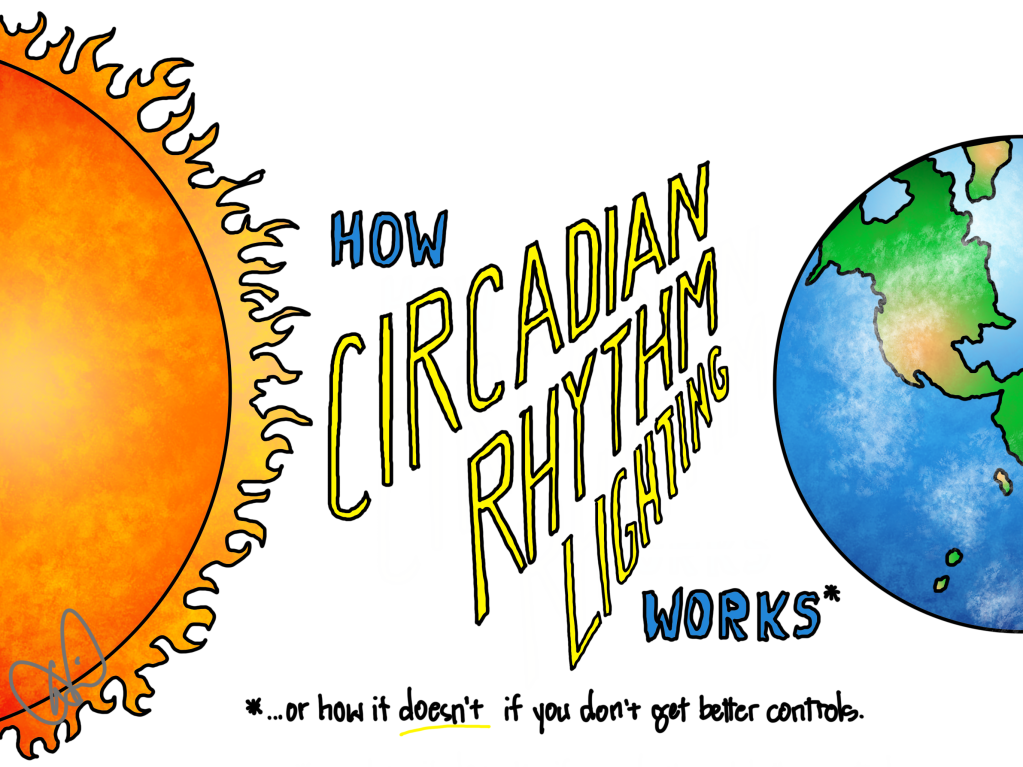It is time to retire your light switches and dimmers…if you want to get the full benefits of good light back into your life. Get them back? Yes, you and I lost out on natural light’s benefits when our ancestors decided houses were better than tents and offices were better than fields. They moved indoors, adopted light from candles and oil lamps and light bulbs, and effectively disconnected us from the light our bodies need during the day, all while subjecting us to too much of the wrong light at night.
The shift indoors brought countless benefits, but also contributes continuously to a host of maladies, exacerbating anxiety and depression, lowering memory and cognition, increasing addictions, and more. I will not dig deeply into the science of light and health in this post (check out all related posts HERE), but instead assume that you believe me and are thinking about changing your lighting to be more in sync with nature.
You cannot make that shift without the right kind of controls, so let’s start with why: the sun rises and sets every day causing an endless and infinite number of shifts in natural light, and that’s what our bodies need.
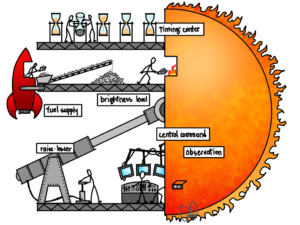
Let’s take a look at how natural circadian rhythms are triggered. The sun up in the sky is raised and lowered every day by a complex set of machines that precisely and predictably moves the sun from low on the horizon to high overhead and then down on the opposite side. My son calls this astrophysics, but I am not smart enough to understand that level of math so I decided to imagine the sun as a machine instead.
The machine is rather complicated; raising and lowering is just the beginning. Visible intensity, which you might call brightness, also changes over the course of a day, as does color temperature. Timing adjusts a little bit each day, shortening and lengthening the days to give us winter and summer. The command center keeps it running like clockwork, and observers keep an eye on our activities and adjust accordingly.
Okay, so that is not at all how the sun works, but it might be if we tried to do it ourselves. And that is precisely what we need to do if we are to get the maximum benefits of light indoors.
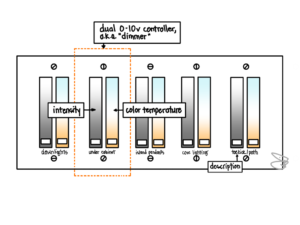
To make a long story short, as my grandfather would say, we need to adjust each of our lights to different intensities and different color temperatures over the course of a normal day, gradually shifting from sunrise to sunset. There are simply controls available that are kind of like two side-by-side dimmers, one for intensity and another for color. The most common systems of this type use essentially analog 0-10v controls, translating a 0-10v signal into the 0-120v power needed by most light fixtures. In a typical well-designed kitchen, you might need five or more of these controllers, giving you effectively ten sliders to manipulate on a daily basis.
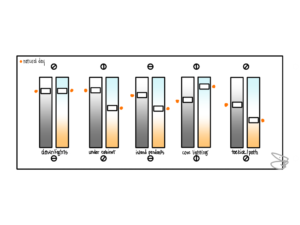
For the sake of argument, let’s imagine that I did a fabulous lighting design for you that will fully support a human-centric approach (see my latest post describing HCL HERE). I will come over to your house and mark with a Sharpie next to each slider my recommendations for the light you need for a natural daytime effect. Just move the sliders to those levels, and you’re all set. Easy?
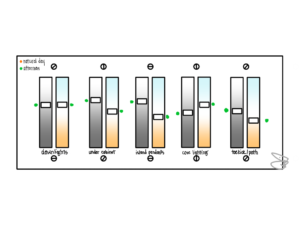
I am such a helpful guy that I will also provide recommended levels for afternoon, when we need intensity and color to shift a bit as we prepare to wind down. Some lights will shift more than others, since you will still need good light on your work surfaces.
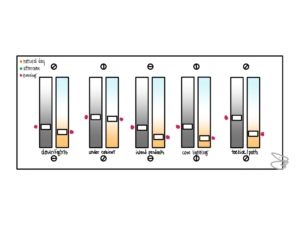
After dinner, just move the sliders to the purple dots I marked on the plate to set all the lighting to a relaxing, comfortable look. This is critical to reduce the amount of light and prepare you for rest.
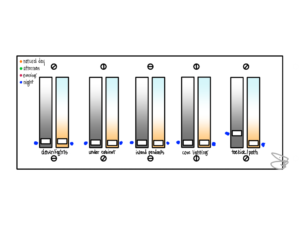
Ready for bed? Most of the lights should be turned off, but I recommend leaving a few low-level path lights on in key areas of the home to make it safer and more comfortable to move around at night.
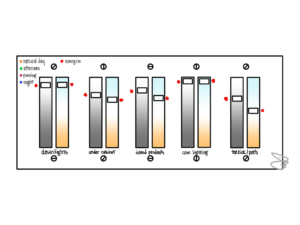
Perhaps you ask me about evenings when you need to be pushing against a deadline, or early mornings before a winter sunrise when you need to get lunches packed and the kids out the door. I will make a few markings for what you might call the Energize Mode to keep you moving.
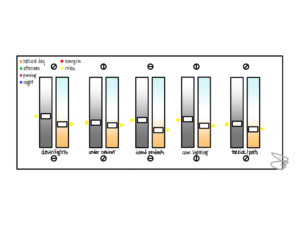
You might need an override for a more relaxing or entertaining feel, so I’ll dig out another Sharpie and make a few marks.
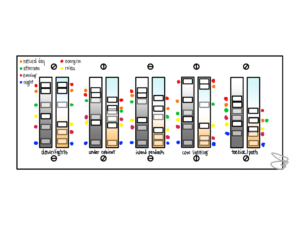
And there you have it…a nicely labeled wall of controllers for your new kitchen. Lovely, isn’t it? I know from personal experience that, unless you hire staff to stand next to the dimmers and adjust them continuously all day, every day, you will never get the full benefits of the lighting design without a simpler way to recall these looks. You will not get the benefits of the best light without intelligent scene controls.
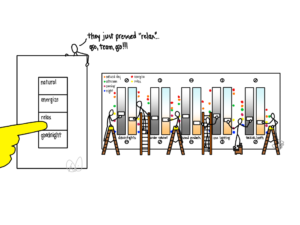
Making all these adjustments on an hourly basis is a ridiculous ask, so how about I hire some tiny technicians to live inside your walls and make all the adjustments for you? We can put a lovely keypad with a few choices on your wall and hide the rest of the mess away.
Just press the top button to turn the lights on and they will automatically adjust to something appropriate for the time of day. When you leave the room, press the bottom button and the lights will automatically set to a minimum level. I included a pair of overrides for you (energize and relax) in case you want to shift things.
My tiny technicians will take care of the rest, so long as you feed them little pieces of red velvet cake regularly.
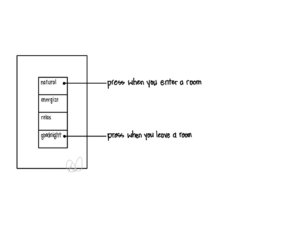
Or you could hire a custom integrator to set up the system and let tiny computers do the hard part. Ah, isn’t that easier?
You can have lighting without controls. You can have pretty looking lighting without controls. But if you want to have light that helps you live your best life, you need scene-based controls.
Read more light & health related posts HERE.
